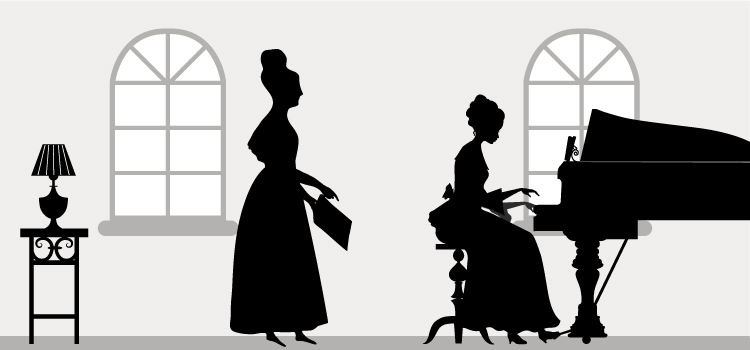
In most public schools across the country, music education is an important part of the educational experience. The history of music education in the United States began before the American Revolution and progressed to the prevalence of music education today.
Music Education in the Colonies
When the Pilgrims and Puritans arrived in Massachusetts, they brought a tradition of singing psalms. According to A Concise History of American Music Education by Michael Mark, the first book printed in America that contained music was a 1698 psalm book.
Meanwhile, secular music was allowed and celebrated in the South. Experienced musicians traveled across plantations to teach children and perform for private audiences and churches. Music education was limited to the wealthy.
As the northern colonies grew, so did the importance of music literacy in the church. The Rev. John Tufts founded the first American “singing school” and published An Introduction to The Singing of Psalm-Tunes in 1721 to cure the ills of music illiteracy. Singing masters taught people in the community to sing by note as part of the singing school movement.
Tunebooks and Lowell Mason
One of the most important parts of early American music education was the tunebook. These instructional texts contained choral music. According to Mark, about 1,400 tunebooks were published.
Lowell Mason was a native of Massachusetts who learned to play organ, piano, flute and clarinet. Mason picked up the teachings of Swiss educational reformer Johann Heinrich Pestalozzi, whose approach transformed music education in America. Mason believed in the importance of the student-teacher relationship in music education. In 1832, Mason founded the Boston Academy of Music, the country’s first school fully devoted to music education for children. Mason “was the central figure in the process of having music adopted as a school subject,” Mark writes.
Earn Your Master's in Music Education Online!
Develop the skills to teach music in a number of settings. Our online degree program is certified by the National Association of Schools of Music (NASM) and does not require an education training certificate.
Learn moreThe School Band Movement
A major force for music education was the school band movement that grew in the second half of the 19th century. As the number of students enrolled in public schools across America grew, so did the number of bands. The marches composed by U.S. Marine Band director John Philip Sousa helped influence the popularity of bands, according to the New World Encyclopedia. Schools began to field all-men and sometimes all-women bands. These bands performed at parades, football games and helped entertain troops returning from the two World Wars.
Emergence of Music Education Associations
The National Education Association (NEA) had an established music division beginning in 1894, but there wasn’t a group devoted to music educators alone until 1907 when a San Francisco earthquake canceled the NEA’s annual meeting. Philip C. Hayden, a music teacher from Iowa, recommended that the NEA’s music division meet in his town, according to the National Association for Music Educators (NAfME). More than 100 people attended the first meeting of the organization that is now known as NAfME in April 1907.
Throughout the 20th century, the group became an influential force in music education. From the 1930s through World War II, the organization fought to make “The Star-Spangled Banner” easier to sing and created the “proper way” to sing the national anthem. In 1952, the group published “A Child’s Bill of Rights in Music” that advocated for children to have the free opportunity to explore their musical abilities. The National Standards for Music Education were developed in 1994.
Music Education Today
Ninety-four percent of elementary schools and 91 percent of secondary schools offer instruction designated specifically for music, according to a 2012 National Center for Education Statistics report. For most students interested in learning music, the opportunity is available.
Future of Music Education
At Campbellsville University, we offer comprehensive training in music education. With our fully online Master of Music in Music Education, you can develop the skills to teach music in a number of settings. The program is certified by the National Association of Schools of Music and does not require an education training certificate.
